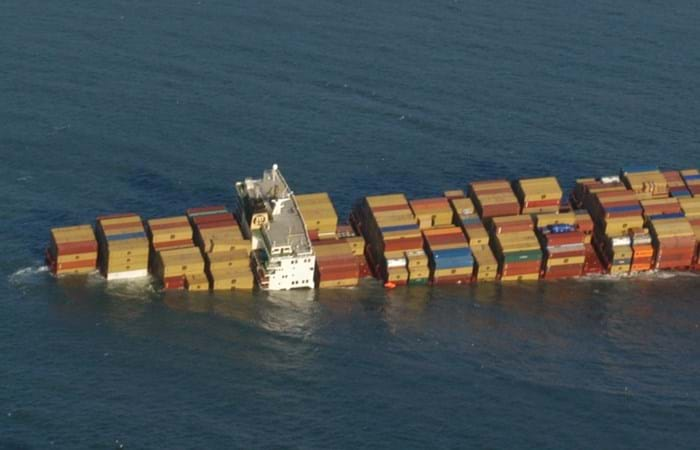Container ship ‘MSC Napoli' suffered severe damage during a violent storm in the English Channel on 18 January 2007. SMIT Salvage was contracted to salvage the vessel which involves the discharge of all 2300 containers and the ultimate refloating of the vessel.
Removal of bunker oil and containers
Initially almost 4000 tonnes of bunker oil was safely recovered. A large barge equipped with two cranes lifted off the containers and placed them on board a ‘shuttle barge'. At the beginning of March 2007 all 860 on-deck containers were removed.
The salvage operation proceeded with the discharge of the containers from the holds. On 17 May the last container was discharged. This part, carried out by a salvage team of some 40 people, took about 4 months. Subsequently equipment was mobilized for the dewatering of the various compartments of the ‘MSC Napoli'.
Refloating
On the morning of 9 July 2007 SMIT Salvage refloated the 'MSC Napoli', subsequently she was brought to deeper water.
Separation
On 20 July 2007 SMIT Salvage separated the fore section from the aft by means of a controlled explosion. Preparations were made to tow the fore section to a scrap yard. Moreover almost all equipment on board was removed, except for the most essential pumps. For the aft section SMIT Salvage was rewarded a 'caretaker' contract. The salvage team of SMIT also removed all remaining pollutants from this section.
Towage
On Thursday 9 August 2007 final permission was received for the towage of the forward section of the 'MSC Napoli' to Belfast. The estimated transit time was 5 days. After bringing her to an even keel draft of 7 metres, she was berthed in the Harland and Wolff Drydock on Friday 17 August 2007.

